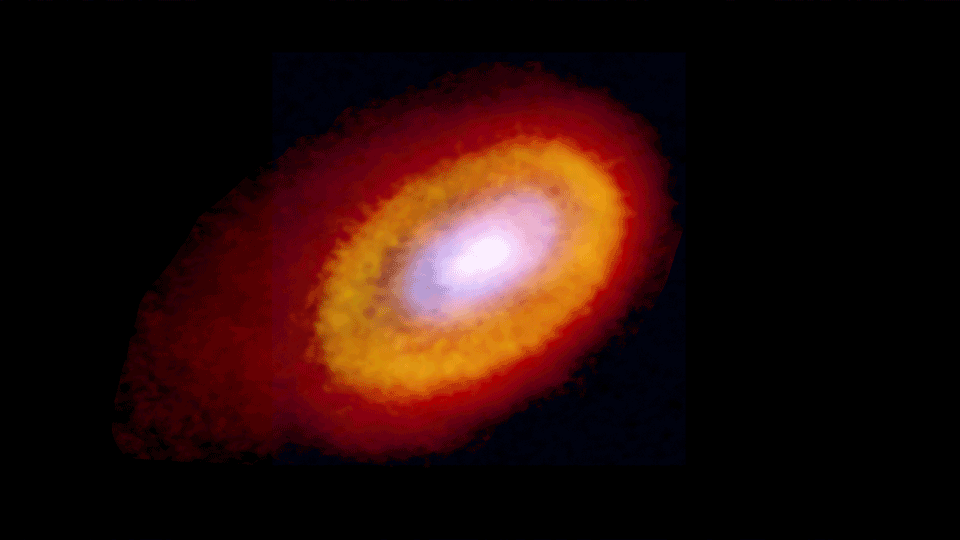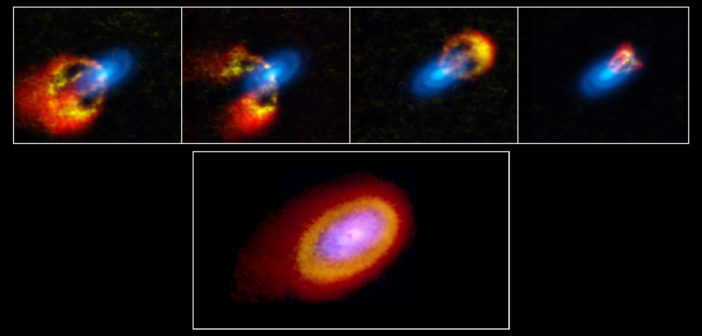Editor’s note: AAS Nova is on vacation until 22 September. Normal posting will resume at that time; in the meantime, we’ll be taking this opportunity to look at a few interesting AAS journal articles that have recently been in the news or drawn attention.
Scientists have made a new, unusually accurate measurement of the mass of the protoplanetary disk orbiting around the young star Elias 2–27. The masses of protoplanetary disks — the disks of gas and dust that surround young stars, in which planets form — are highly uncertain. This inability to precisely measure how much matter is available to form baby planets limits our ability to understand the planet formation processes, so better means of measuring disk masses are needed.
In a new study led by Benedetta Veronesi (University of Milan, Italy), a team of scientists has now leveraged multiwavelength observations from the Atacama Large Millimeter/submillimeter Array (ALMA) to track the rotation curve of the disk around Elias 2–27, disentangling the gravitational influence of the central star from the self-gravity of the disk. This allowed the team to make the first dynamical measurement of this protoplanetary disk’s mass — which provides a much more accurate measurement than previous methods and lays the groundwork for extending this technique to other systems.
Original article: “A Dynamical Measurement of the Disk Mass in Elias 2–27,” Benedetta Veronesi et al 2021 ApJL 914 L27. doi:10.3847/2041-8213/abfe6a
National Radio Astronomy Observatory (NRAO) press release:
Study of Young Chaotic Star System Reveals Planet Formation Secrets

This animation shows the different molecular tracers used to better understand the gases present in the disk surrounding Elias 2-27. Seen are the 0.87mm dust continuum data (blue), C18O emission (yellow), and 13CO emission (red), with each layer shown individually and in composite. [ALMA (ESO/NAOJ/NRAO)/T. Paneque-Carreño (Universidad de Chile), B. Saxton (NRAO)]
